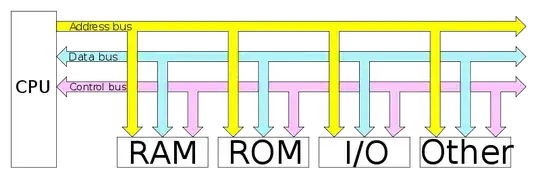I'm reading J. Clark Scott's book But How Do It Know.
When he is describing registers and the bus he illustrates this at one point as five registers sequentially parallel-connected to a bus.
As you turn on the enabler of one register all other registers will copy its byte if their signal is turned on.
If R3s enabler is on it sends signals both left and right, to R2 and R4, and all other registers.
My assumption: The bus is a loop connected to ground at the end so the current from R3 that is sent on the bus has parallel paths to ground, left and right.
My question: Is the bus connected to ground in both directions, and how is the current maintained on the bus when it is being split into the each registers' inputs?
